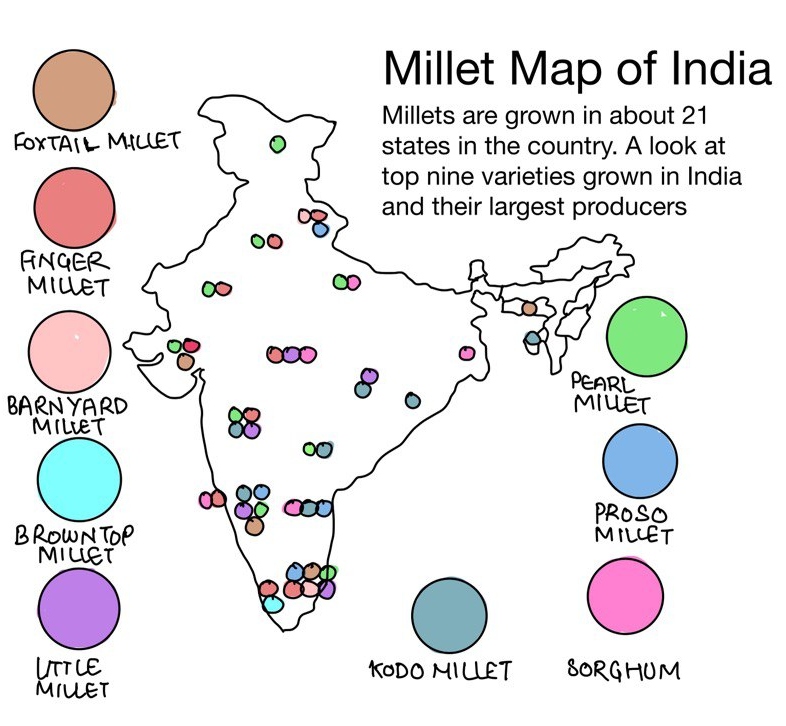Explain the role of millets for ensuring health and nutritional security in India.
Explain the role of millets for ensuring health and nutritional security in India.
Subject: Economy
India's push towards "Shree Anna" (millets) marks a significant shift in addressing nutritional security challenges through indigenous solutions. The country's leadership in declaring 2023 as the International Year of Millets demonstrates its commitment to promoting these climate-resilient superfoods.
Millets in India
Health and Nutritional Benefits of Millets
-
Nutrient-Rich Profile: Millets are rich in proteins, minerals, and vitamins, making them effective in combating malnutrition indicators (36% stunting and 17% underweight among children under six).
-
Disease Prevention: Scientific studies (2023-25) demonstrate millets' effectiveness in:
- Reducing anemia prevalence.
- Improving glycemic control.
- Lowering risks of cardiovascular diseases.
-
Dietary Diversity: Integration of different millet varieties (sorghum, pearl millet, finger millet) enhances nutritional intake and promotes sustainable dietary habits.
Role in Ensuring Food Security
-
Production Leadership: India contributes 38% of global millet production (17.25 million metric tons in 2023), positioning it as the world's largest producer.
-
Climate Resilience:
- Drought-resistant nature ensures food availability in water-stressed regions.
- Low input requirements make them suitable for marginal farmers.
Government Initiatives and Challenges
-
Policy Support:
- Implementation of PM Dhan-Dhaanya Krishi Yojana in 100 districts.
- Integration into Mid-Day Meal schemes and Public Distribution System.
-
Consumption Challenges:
- Decline in per capita consumption from 15.89 kg (1960) to 4.2 kg (2010).
- Changing dietary preferences and availability of cheaper alternatives.
The revival of millets through initiatives like "Shree Anna" and their integration into public nutrition programs presents a sustainable solution to India's nutritional challenges while promoting agricultural biodiversity and climate-resilient farming.
Answer Length
Model answers may exceed the word limit for better clarity and depth. Use them as a guide, but always frame your final answer within the exam’s prescribed limit.
In just 60 sec
Evaluate your handwritten answer
- Get detailed feedback
- Model Answer after evaluation
Model Answers by Subject
Crack UPSC with your
Personal AI Mentor
An AI-powered ecosystem to learn, practice, and evaluate with discipline

